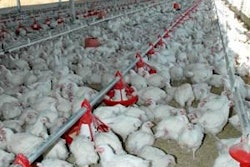There may be big changes in U.S. farm policy with little room for the status quo in the 2012 farm bill, House Agriculture Committee Chairman Collin Peterson (D-Minn.) said during the first Washington hearing on the subject.
Speaking with reporters after the hearing, Peterson said he has broken down how each of the crops subsidized under the 2008 farm bill is faring under the multitude of existing support programs and government-subsidized crop insurance. The fact that farmers of some crops fare much better than others under existing subsidies will make it very unlikely the 2012 farm bill will be a status quo bill, he said.
"Looking at everything the government is doing to help individual crops," Peterson said he has calculated the percentage of "what farmers are getting compared to what the value of their crop is" and it varies wildly from 2 percent to 26 percent, depending on the crop.
Peterson said he would eventually make public all of the calculations, but for now he only let slip that soybean farmers were at the bottom of the range, getting 2 percent of the value of their crop in government support.
The chairman has made it clear that he will spend considerable time in the coming months listening to a wide range of interested parties in preparation for finding a better way to provide an economic safety net for America 's farmers and ranchers.
Agriculture Secretary Tom Vilsack was the featured witness at the hearing. In prepared remarks, the secretary noted that "many Americans continue to question the efficacy of dedicating current levels of federal resources and support through farm bill legislation."
Vilsack pointed out that per capita income in rural America is approximately $11,000 below the urban and suburban workforce. "In addition, job loss rates are higher in rural areas, and rural Americans are finding it more difficult to find and maintain quality jobs," he said. Specifically, "loss of employment in light manufacturing sectors has been more severe in rural areas, meaning that rural families have reduced access to the key benefits that these quality jobs provide."
Vilsack called on Congress to "approach this new legislation with an eye toward truly making a difference in the future of the lives of millions of rural Americans." And, he added, "If we set our goals appropriately, we can properly assist and strengthen production agriculture, while also building and reinforcing the future of rural communities.
His remarks serve to set the stage for an administration proposal that could focus the benefits of the next farm bill far less on farmers and more on all rural residents.

















